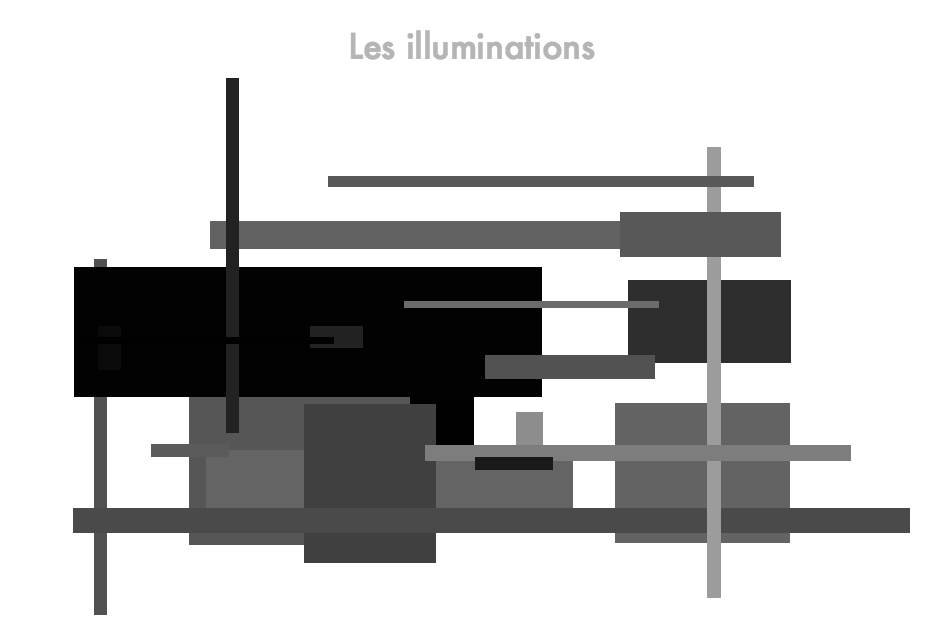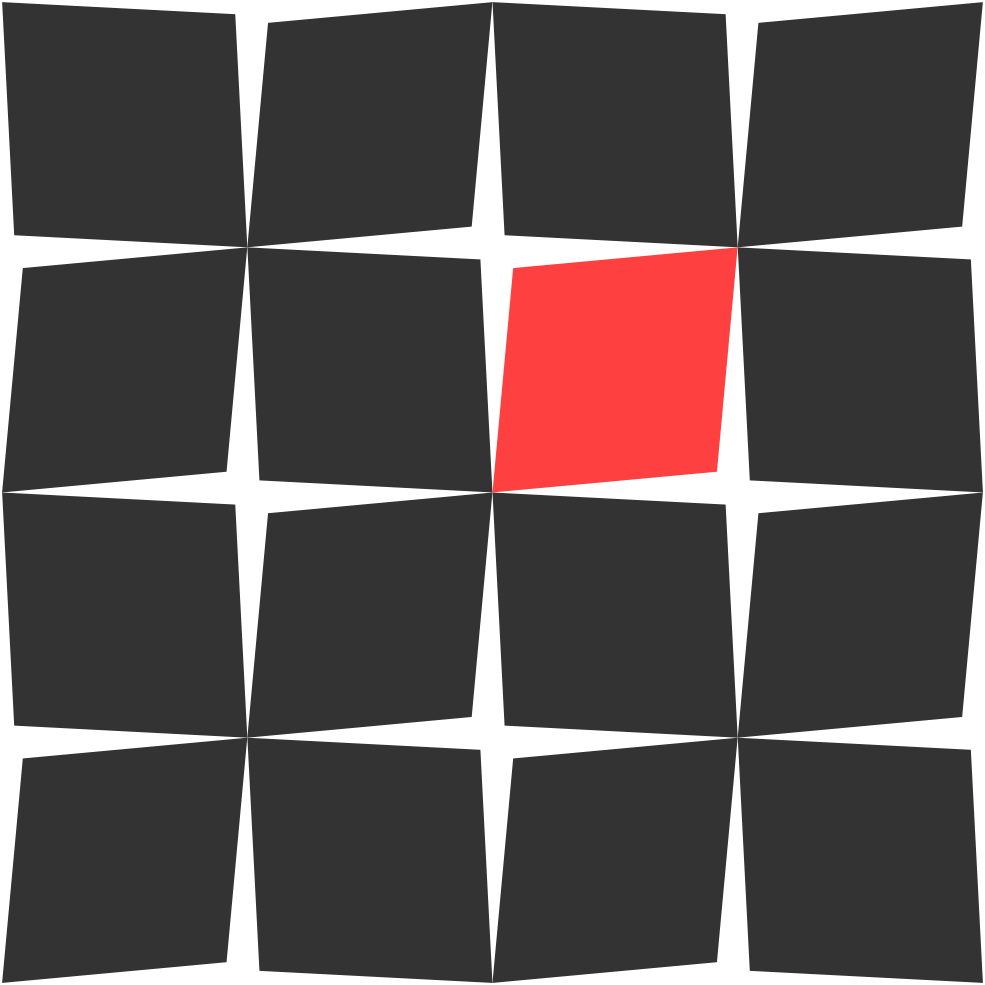Radio Polytope
A radio sound-installation / happening [2022]
Any-size audience/performers, mobile smart devices
Radio Polytope is a hybrid between a sound installation and a large-scale sonic happening inspired by the work of Iannis Xenakis. A generative algorithmic engine is composing and re-arranging an infinite stream of audio data, transmitted through a custom-made web radio station. A variable-sized group of people, at any geographic location in the world, can join the transmission and participate in the diffusion of the sound by using their mobile smart devices. Each audience member is becoming an individual sound emitter, contributing to and shaping the final soundscape.
I belong, probably, to the last generation who grew up listening to FM radio on a daily basis. Buying a Cd, vinyl, or tape cassette was expensive in the 80s. I remember waiting for week(s) to buy my next album. At those times radio used to be our best friend. Nowadays, music is everywhere (Spotify, Deezer, YouTube, etc). There is instant availability for everything. The audience decides on the piece or sequence of pieces they listen to at any moment (usually skipping tracks and getting only a glimpse at each composition). Radio had -and still has- the magic attribute of offering an unpredictable and unknown experience. Even in the process of scanning through radio bands, one can never know what music will be discovered and which will be the next piece of sound. The control of the music flow is falling out of the hands of the listener. Radio polytope takes this attribute as a starting point and builds a narrative around it. The audience becomes a performing body distributing unpredictable sounds in a particular space
I have always been fascinated by the idea of transmitting audio data remotely. From operating a local pirate FM transmitter, up to sending audio and telemetry data to the lunar orbiters, the concept of reaching remote places by audio (covering long distances in special formats/codecs and then being converted back into audible sound) has always made me feel thrilled. There is something mysterious in transcoding the sound while it is transmitted through any medium (air, internet, vacuum) and then decoding it back into musical sound. Radio broadcasting has a polytope nature per se. One transmitter is reaching out to many (sometimes thousands or even millions) receivers, communicating thoughts, sounds, and emotions simultaneously and at various geographical locations. This way unknown groups of people turn into a virtually integrated audience. The sense that many unknown people are experiencing the same event is possibly the most significant part and the beauty of listening to the radio!
When I started experimenting with web-based audio streaming, I realized that a drawback of the technology used nowadays in audio servers, the latency across the tuned devices, can be used creatively. Tiny and discrete gestural changes in the audio signal that is transmitted can build a “liquid” form and enhance/demonstrate the spatial, 3D dimension of sound just by being decoded and played with slight time shifts across the members that participate in the happening.
I hope you will enjoy being part of this installation. All you have to do is to bring your mobile phone out of your pocket, connect to the stream and walk around. More essentially though, you are invited to listen to all of the nuances of sound that are created by yourselves becoming little drops into a bigger cloud of a sound rain.
Dimitris Maronidis
Instructions
- If you plan to organize a performance of the sound installation / happening, please get in contact in advance to set up, calibrate and fine-tune the details beforehand
- It is highly recommended to use external Bluetooth speakers if you intend to perform this outdoors
- Scan the QR code below or visit http://polytope.maronidis.net and press play to start the stream on your smart device
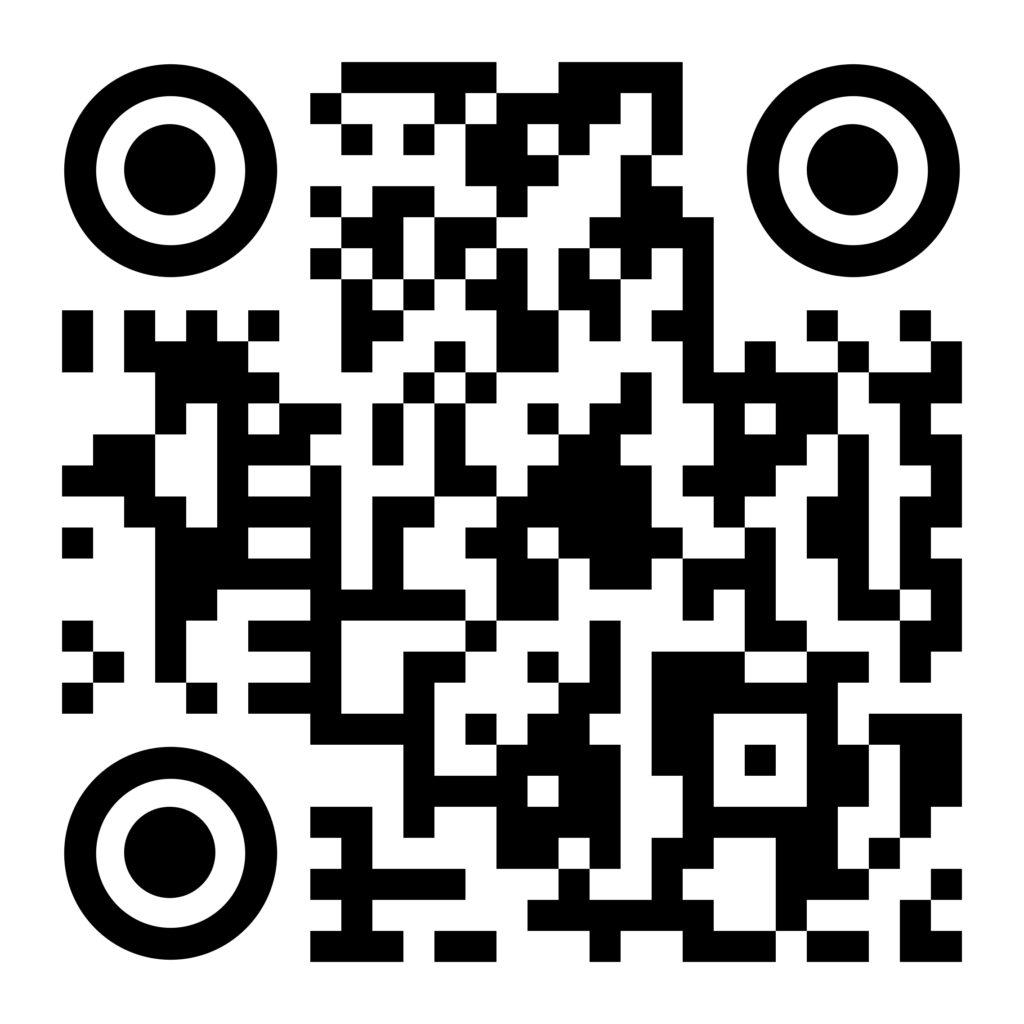
- Feel free to move around. Preferably in a slow and silent way
- You are free to alter the volume of your smart device. This will influence the spatiality of sound
- You are free to move and/or change the orientation of your smart device. This might alter the frequency content of the sound
- You are advised to listen deeply to how the sound is diffused into the space!
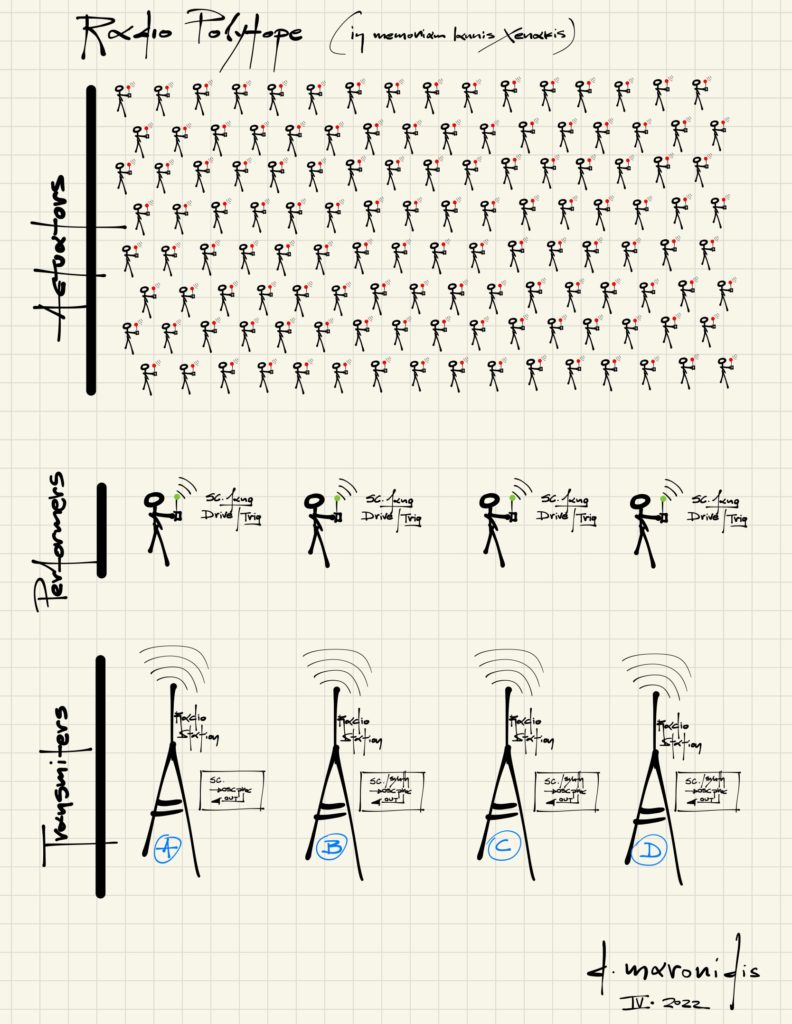
Multiplexing
Kinetic Sound Installation [2019]
Plywood, Arduino, lip-gloss jars, magnets (100x68cm)
Multiplexing /Πολυπλεξία/ is a Kinetic Sound Installation created in 2019. It is made of plywood, Arduino micro-controller, lip-gloss boxes, DC motors and magnets.
In telecommunications and computer networks, multiplexing (MUX) is a method in which multiple analog or digital signals are combined into one over a shared medium. The aim is usually to share a scarce resource. For example, in telecommunications, several telephone calls may be carried using one wire. Multiplexing originated in telegraphy in the 1870s, and is now widely applied in communications.
In this particular work, the idea of MUX is transferred into the sound domain. A series of logically performed processes are channeled and distributed through a transistor array, activating a matrix of micro-sound sources thus building a large, mechanically generated, sound-cloud. Each cell of the system is becoming a part of a larger sound body. Each voice, no matter how infinitesimal, matters in order to build a collective sound-set. The work symbolically refers to the unity that we all need -in these dark days- in our world.
The piece was premiered at MOMus-Experimental Center for the Arts at the port of Thessaloniki on May 2019. (www.cact.gr) as a part of the exhibition Visual Symphonies
Since 22 June 2020 Multiplexing belongs to the permanent collection of MOMus Museum of Modern Art in Thessaloniki
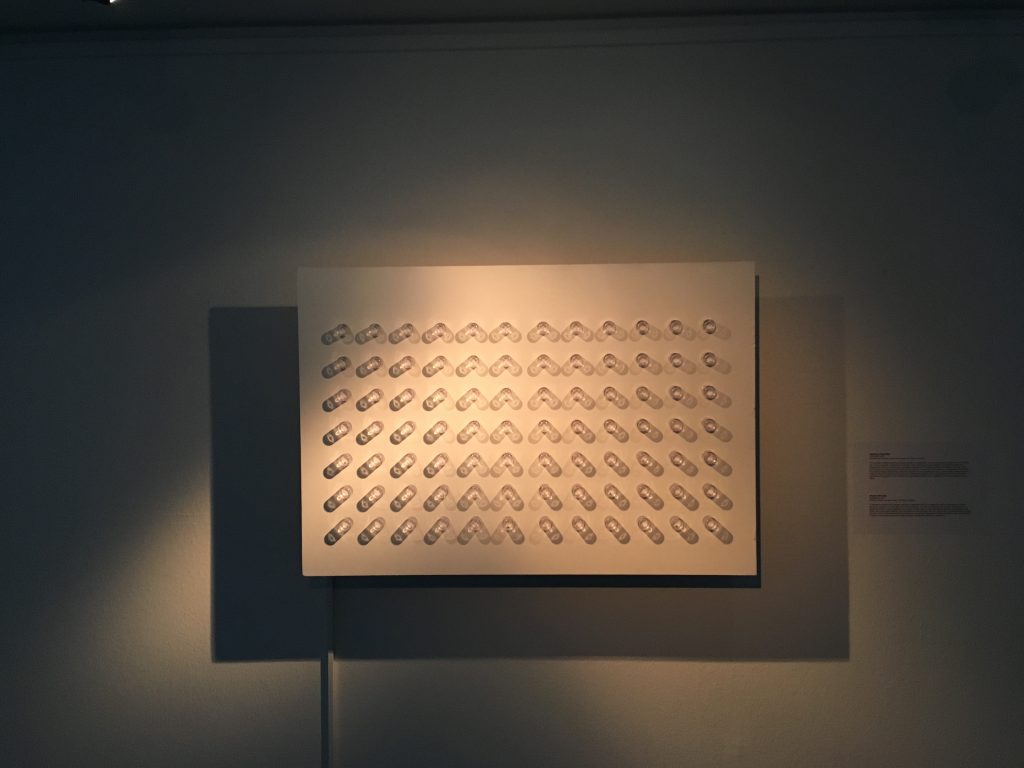
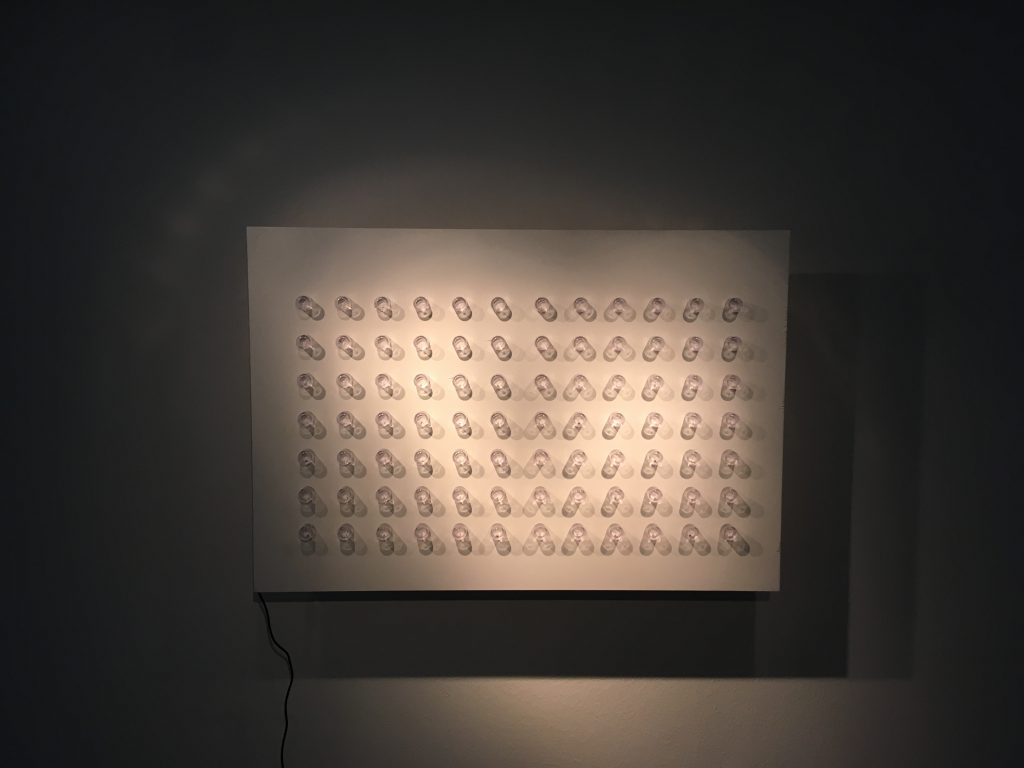
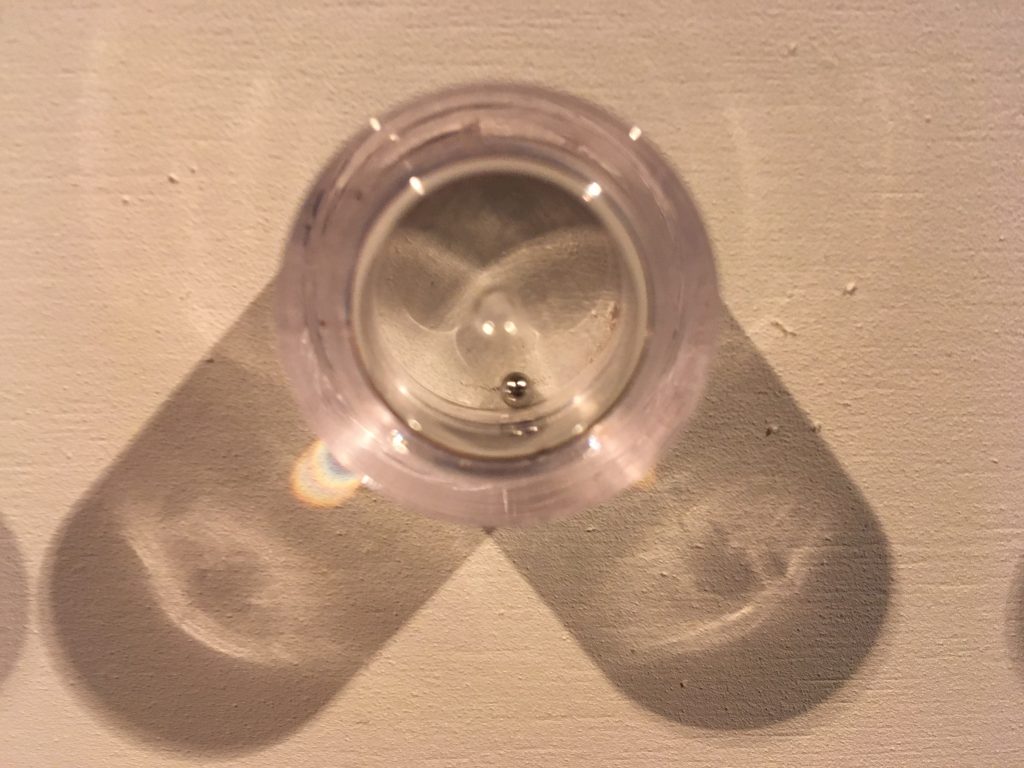
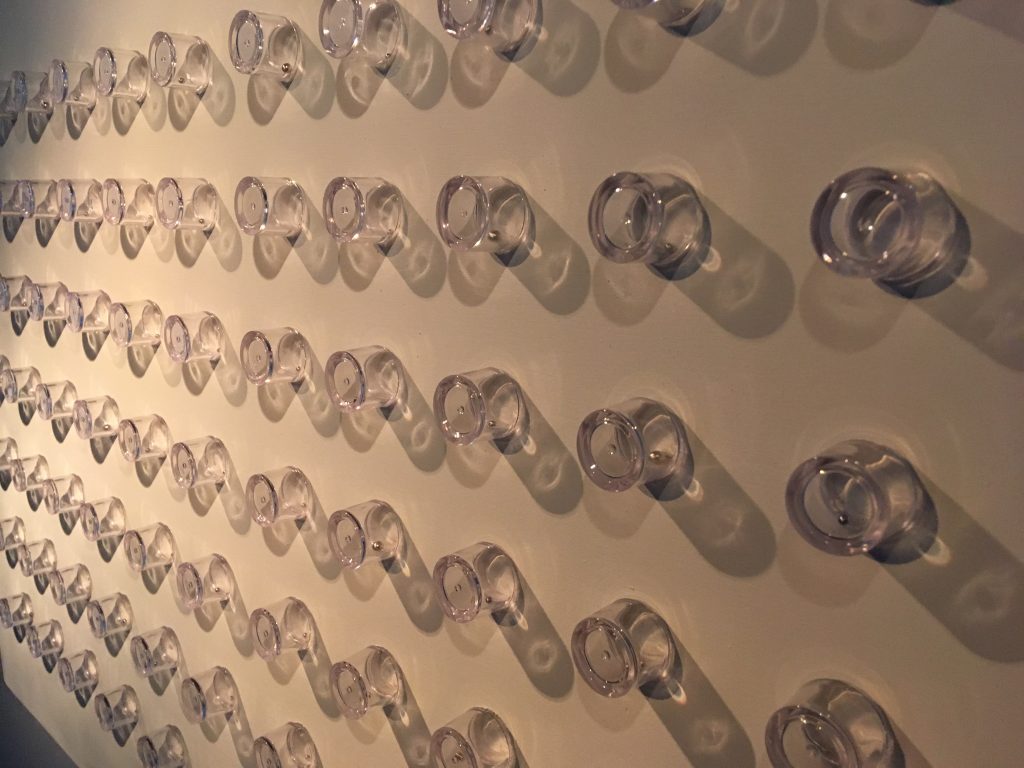
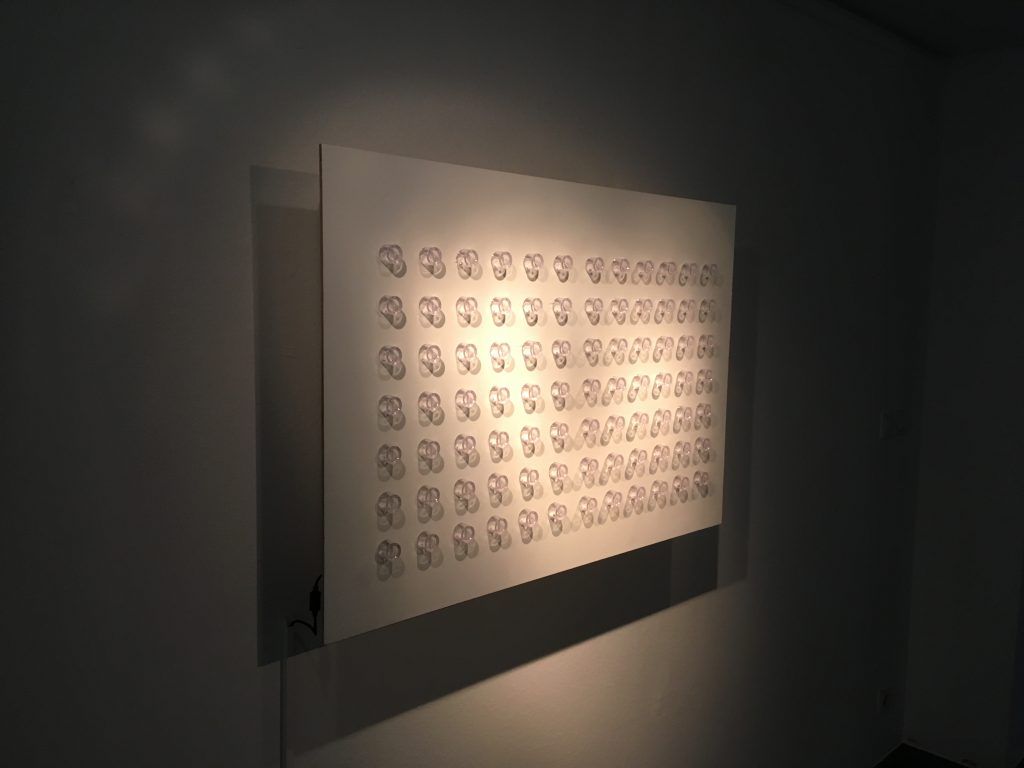
DeFence
Large Scale Happening [2019]
for 4 Conductors | 88 performers (minimum), Wire Cutters, Hammers, hand wrenches, motors, sheet metal, Lights, Live Electronics
DeFence was a large scale happening that took place at Megaron Concert Hall of Thessaloniki on 21 of June 2019 on the occasion of the celebration of the world day of music. As a part of the performance the fence of the east bound side of the Concert hall was demolished by a massive amount of approximately 100 performers motly students of the School of Fina Arts of Aristotle Univeristy of Thessaloniki and the National Theater of Thessaloniki
The performance took place around 23:00 in the evening in very low light conditions. Conducted by 4 conductors who were receiving audio information/instructions from the composer wirelessly, in real-time, and accompanied by electronic sounds, the performers used hardware tools to make sounds on the metallic mesh eventually brining it down by cutting it in parts and then moving themselves away. In a deliberate action of breaking any means of human isolation, discrimination and oppresion the piece, despite of its brutal content delivered a message of unification.
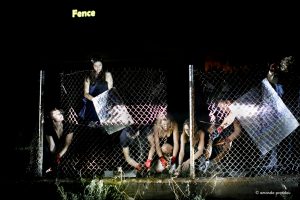
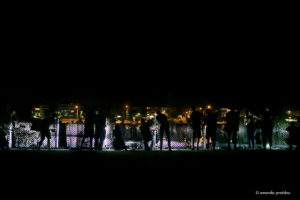
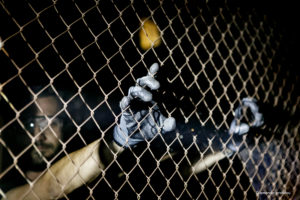

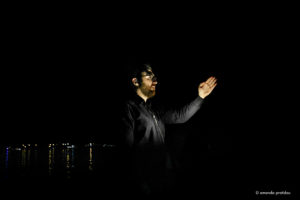
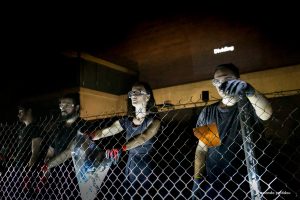
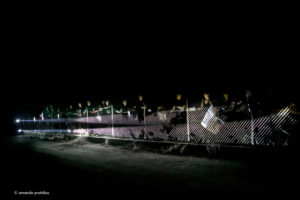
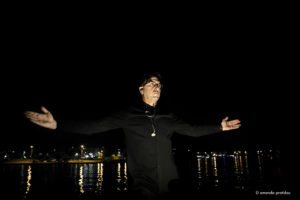
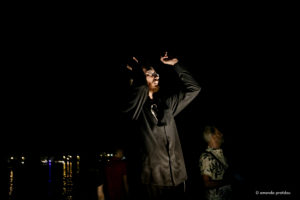
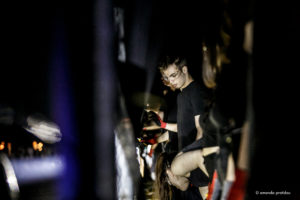
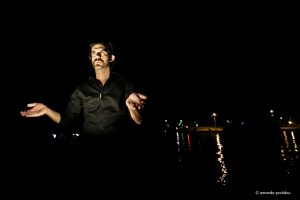
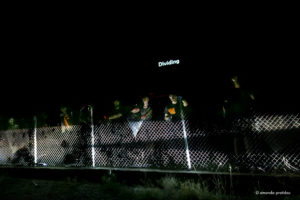
Graffiti
Interactive Sound Installation [2018]
Graffiti is an interactive sound installation. The concept of the piece derives from the technique of graffiti found in visual arts, where anyone, not necessary skilled, person can try to express publicly in the visual domain without always being identified. In Graffiti, the visitors are invited to use their smart devices to trigger sound events in real-time acting as composers, conductors and performers at the same time. A special system, consisting of a Raspberry Pi running SuperCollider is built to emulate an imaginary symphony orchestra. The system responds to input commands and generates sounds in real time New soundscapes can arise on the fly in a playful way – giving the opportunity for each participant to feel the excitement of music creation even without any pre-developed musical skill. Many people can play at the same time being at the place of the installation but also remotely. This was a new approach in making music ensembles of amateur musicians is examined.
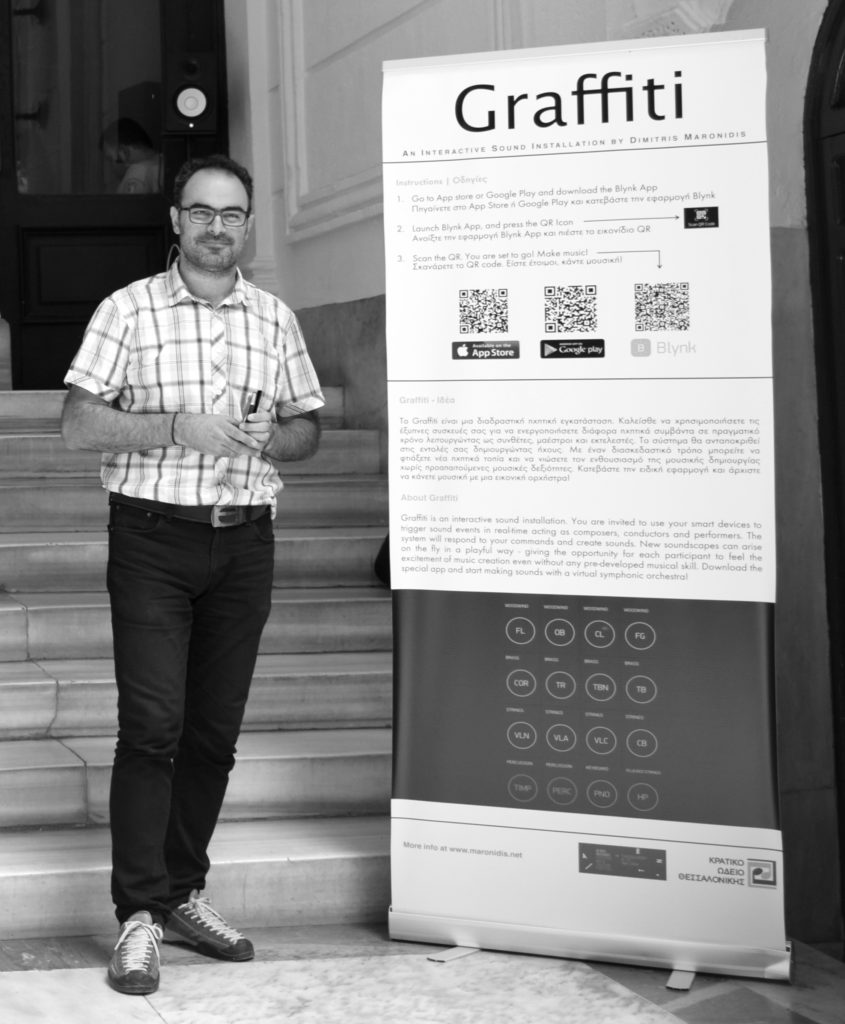
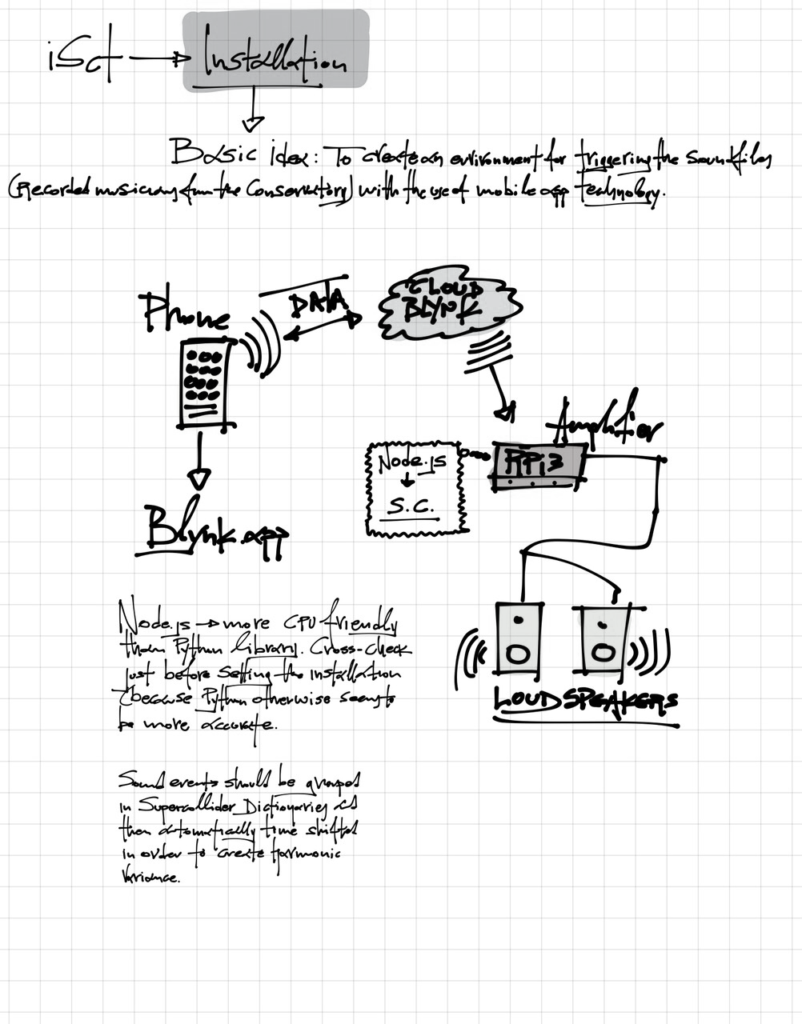
Les illuminations
for Max/MSP Audio + Visuals [2003]
Les illuminations is a stochastic sound installation created in 2003. The installation was first exhibited at the Music Department of Aristotle University of Thessaloniki as a part of Music Circus Project directed by Danae Stefanou. It consists of a Max/MSP application that generates filtered white noise sounds, while at the same time projecting geometric shapes and displaying the poem “Départ” by Artur Rimbaud.
Départ
Assez vu. La vision s’est rencontrée à tous les airs. Assez eu. Rumeurs des villes, le soir, et au soleil, et toujours. Assez connu. Les arrêts de la vie. – O Rumeurs et Visions ! Départ dans l’affection et le bruit neufs!
Arthur Rimbaud, IlluminationsEnough seen. The vision has been encountered in all skies. Enough had. Sounds of cities, in the evening, and in sunlight, and always. Enough known. The stations of life. — O Sounds and Visions! Departure amid new noise and affection!
